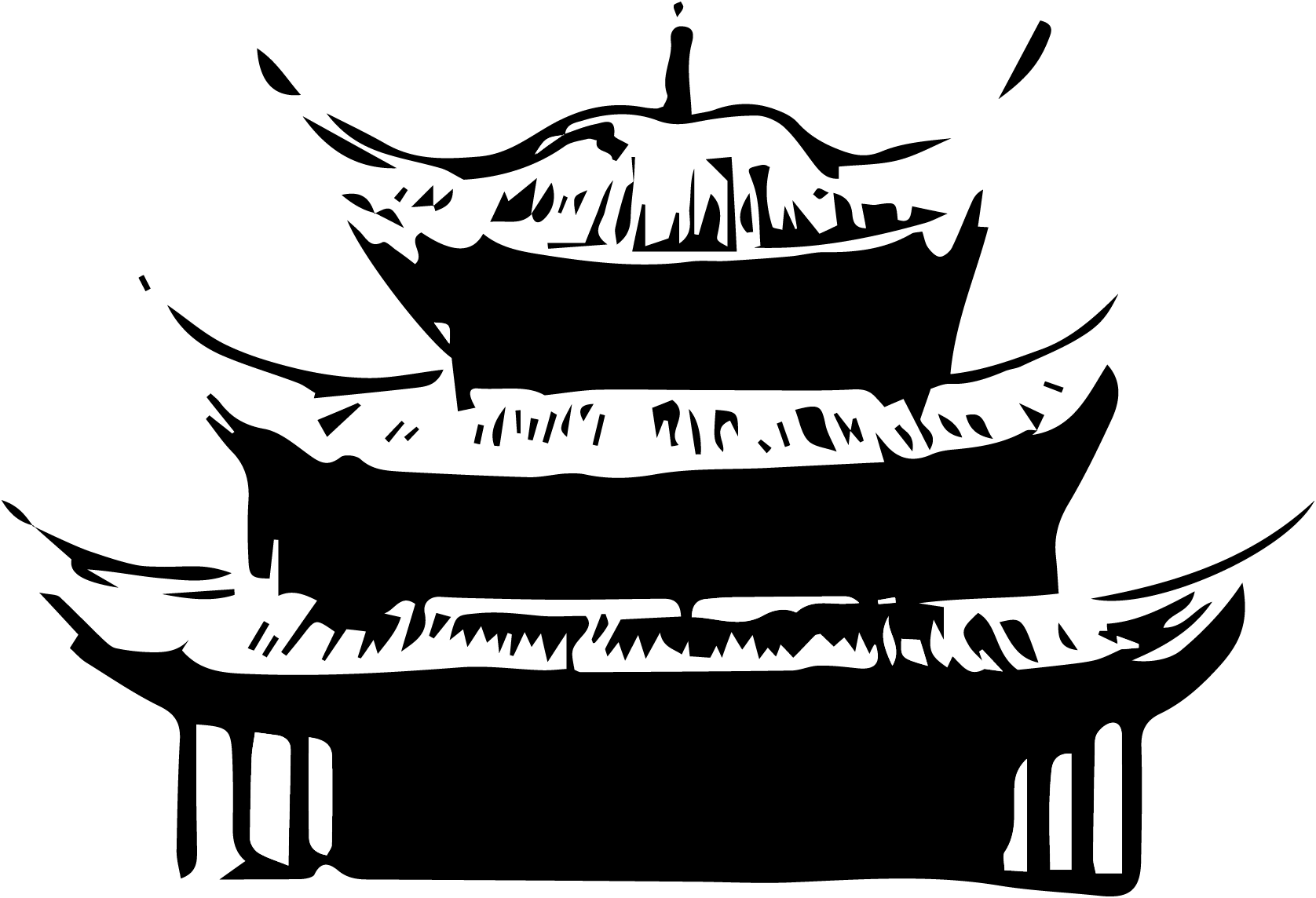Architecture on the Road
2 DAYS EXPLORING BATTAMBANG
Battambang is the second largest city in Cambodia, but it is not a major tourist attraction and is often considered a secondary destination by many travelers. It does not have some of the cultural or natural features of other tourist destinations in Cambodia and it is not easily accessible; but perhaps this is one of the reasons that make Battambang a city worth visiting to have a complete experience of the country: its authenticity, tranquility, and simplicity.
We visited Battambang after 3 intense days dedicated to the exploration of Angkor Wat, and we definitely needed to rest and recharge.
The decision to squeeze in 2 days for the city was a good call: Battambang indeed delighted us with a vibrant architectural heritage, subtle cultural sites, great food, and the lively, yet relaxed life of a small town in South East Asia.

The old part of the city center displays traces of an elegant colonial past of decadence, while the outskirts and the surrounding countryside boast a handful of Angkorian temples, traditional villages, and a relaxed pace of life, far from the hustle and bustle of the big cities and mass tourism.
Our weekend in Battambang was a perfect mix of lazy exploration and relaxation, thanks in large part to the overnight stay at the best hostel of the whole Cambodian trip, the Blue Diamond Hostel, which made our stay especially enjoyable. The pool was a perfect way to stay cool in the oppressive, mid-day heat.
(you can book this hostel on booking.com and get a 15€ discount through this referral link)
What is colonial architecture?
The term “Colonial Architecture” defines the architectural style utilized by European countries in their colonial overseas properties, where often the colonizing countries exported some of their national style. These forms, however, have sometimes taken on new characteristics through a fusion of European styles with climatic features, materials, and cultural influences of the colonized country, especially in South East Asia.
Cambodia was a French colony from 1864 to 1953, and the influences of the European architecture are still one of the main features of many Cambodian cites, with Battambang being one of the most glaring examples.These influences are realized in some elegant public buildings or villas, displayed by classical shapes and decorations, the use of color, the use of balconies and porches, and the adorned pitched roofs or modernist rounded edges in the compact residential blocks.

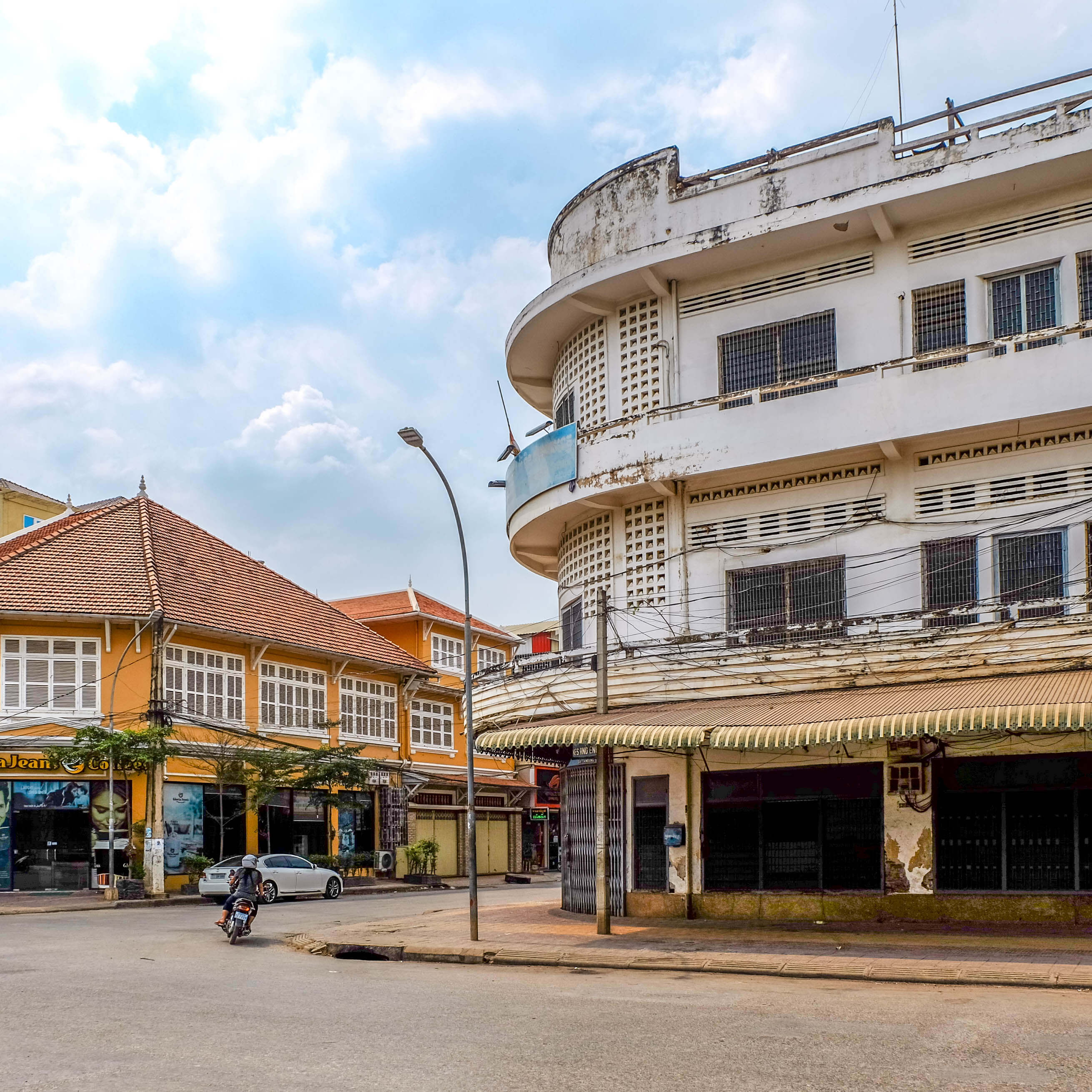
Battambang displays an interesting collection of French colonial Architecture, mostly decadent shophouses and apartment buildings, dating back to the French colonial era of the 19th and early 20th century. The Colonial Architecture heritage is a main characteristic of the city center, located on the West riverbank.
This part of the city, featuring more than 800 colonial buildings including apartment buildings, administrative buildings and shophouses, is considered a Heritage Protection Area, and has recently applied to become a Unesco World Heritage Site.
Among these features, the most remarkable buildings of this kind are the Art Deco Phsar Naht Market (built by the same french company responsible for the Central Market in Phnom Penh) and the Governor House (built in 1907).
The Khmer Architecture tour offers an itinerary for the old part of the city, and is a very useful insight to appreciate the Colonial Architectural heritage of Battambang.
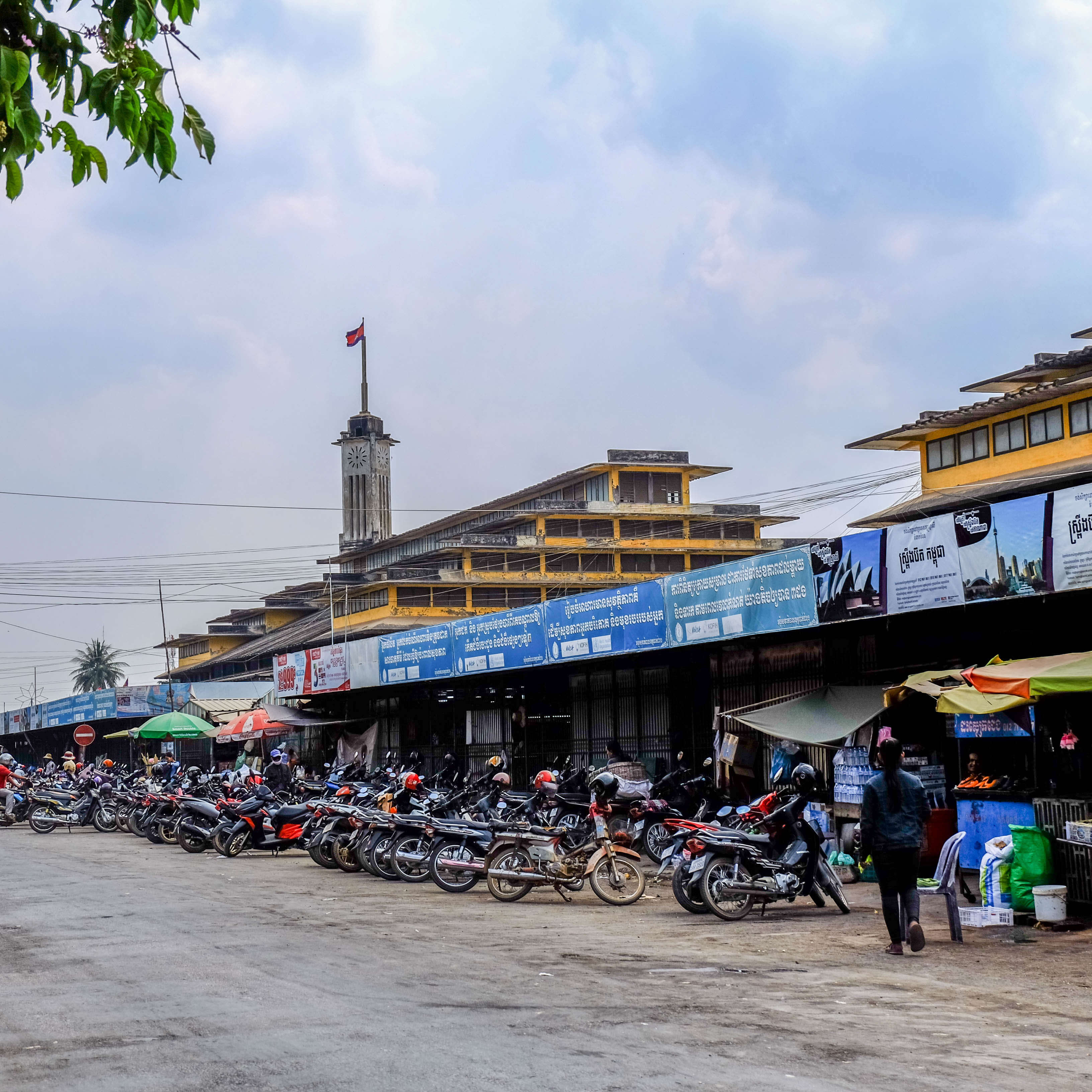
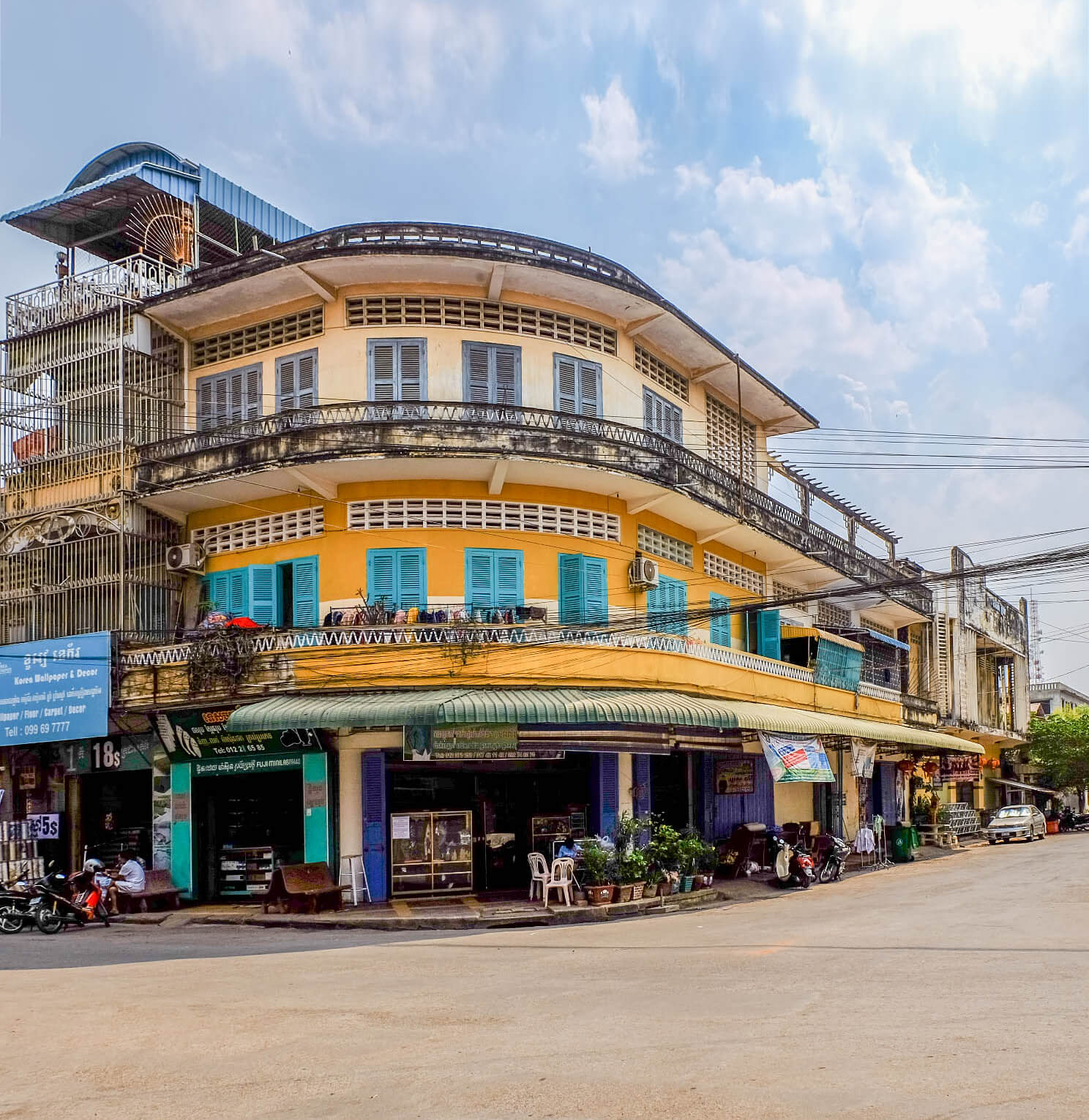
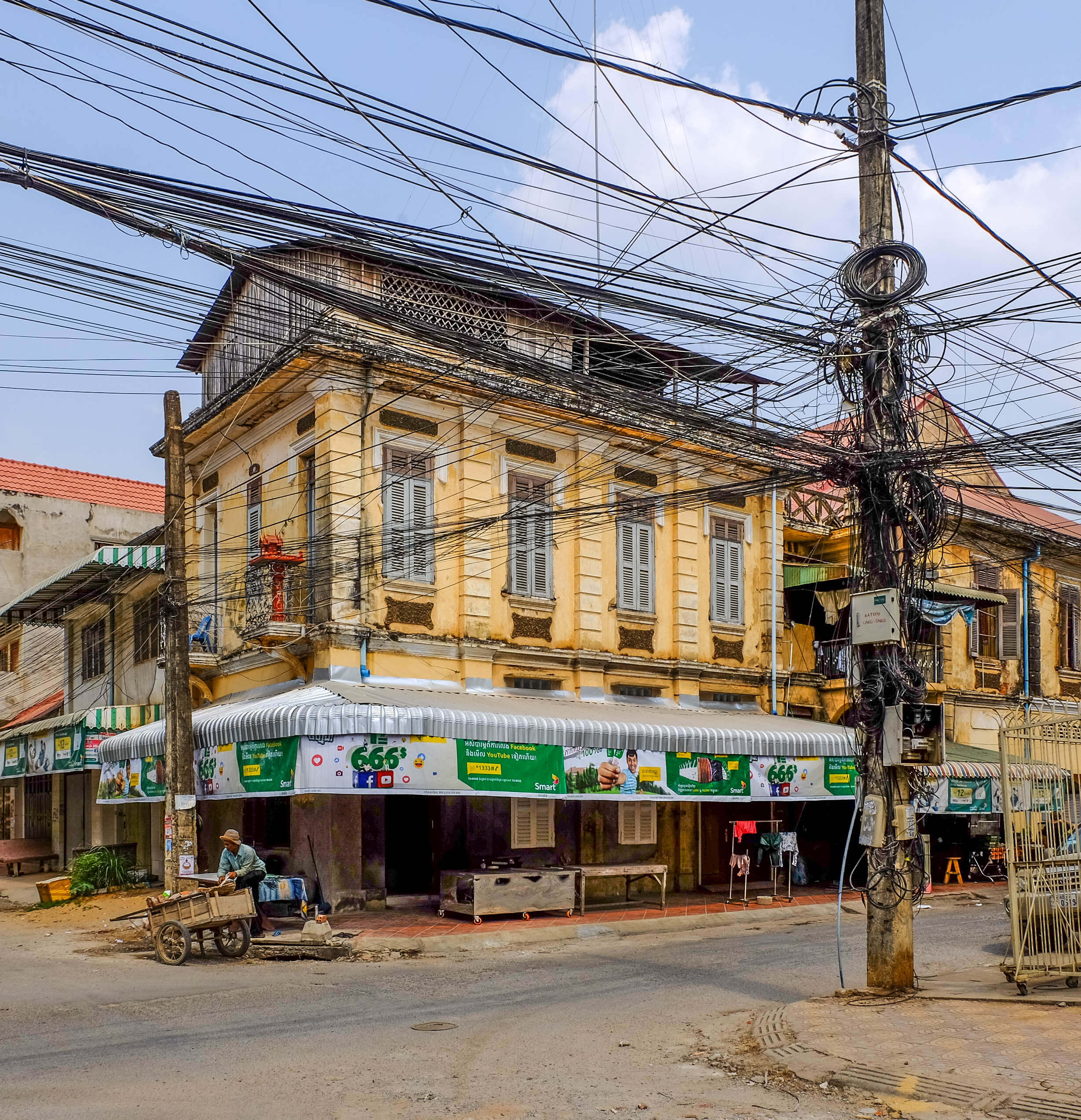
On the outskirts of the city, it is possible to admire hundreds of Khmer timber homes, a vernacular typology common in the countryside of the whole Cambodia.
We could especially admire those traditional buildings along the way to Phnom Banan Temple and Phnom Sampov.
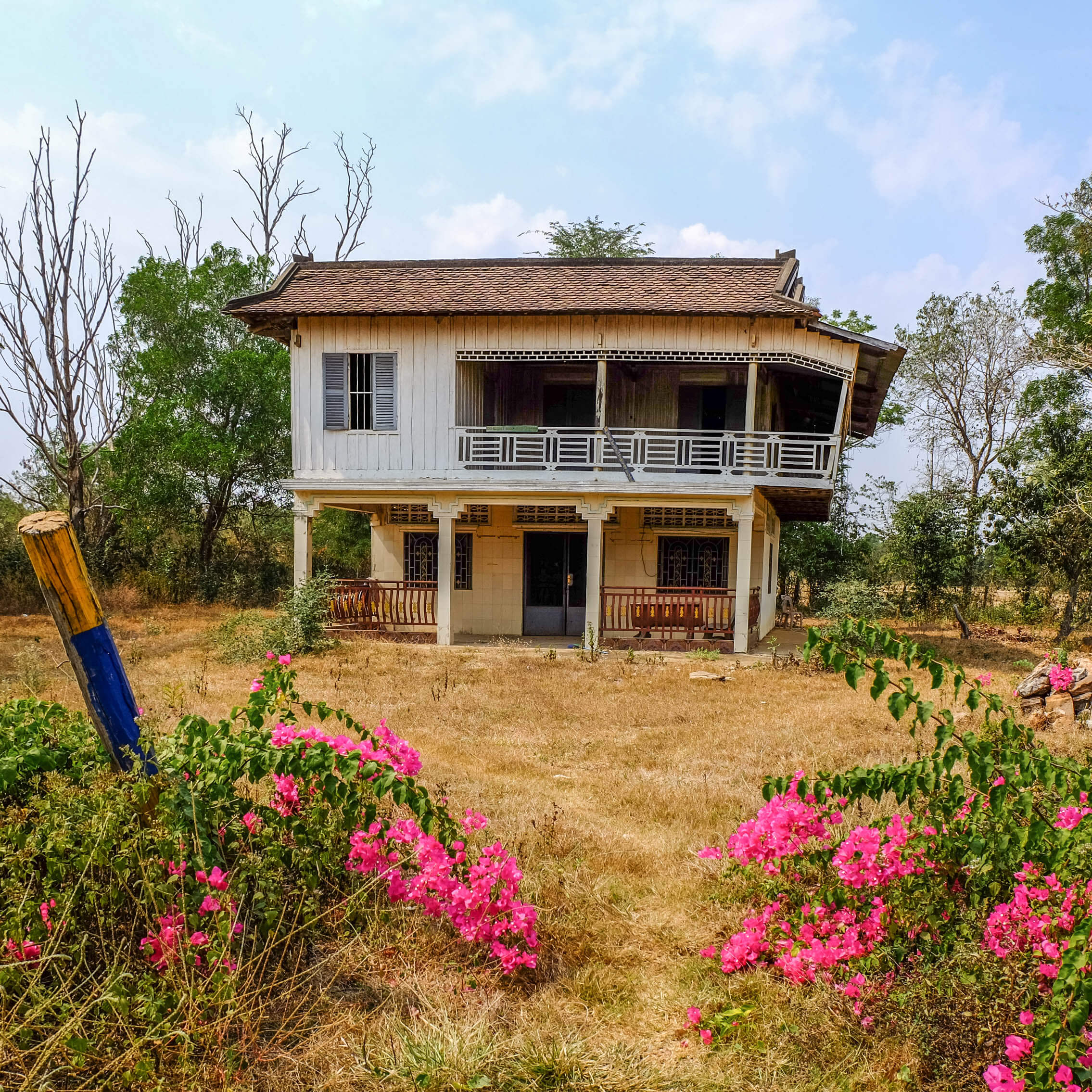

The road from the city center to these religious sites crosses several local villages and a number of rural Khmer houses of various size, materials and refinements.
These houses area usually characterized by a wooden frame raised on stilts (which can raise up to over 4m). The main enclosed space at the upper level is accessible by ladder or a solid staircase, and consist of a single room for the simplest houses, but can have several interior partitions in the bigger homes, providing separated bedrooms and storage spaces. The elevated position is mean to protect the house from annual floods and help with natural ventilation.
The ground level is mostly used as a shelter without cladding. This area is very important in daily life, as most of the day to day activities take place there, in this shaded exterior area.
The upper enclosed room is mostly used as a sleeping place and for storage of valuable processions. The cladding is made out of palm leaf matting and bamboo sticks for the simpler homes, and of wooden boards for the bigger and more wealthy homes.
The roof can vary in shape and size according to the dimension and the wealth of the family. It can be gabled or hipped, and made of wood rafters, palm leafs, or tiles.
Usually the roof is built before the wall cladding, and is detached from it with a 5-10 cm gap, which helps to vent out the hot air from inside, providing natural ventilation.
In fact, despite the extremely hot and humid Cambodian climate, these Khmer traditional homes are comfortable thanks to these natural ventilation systems.
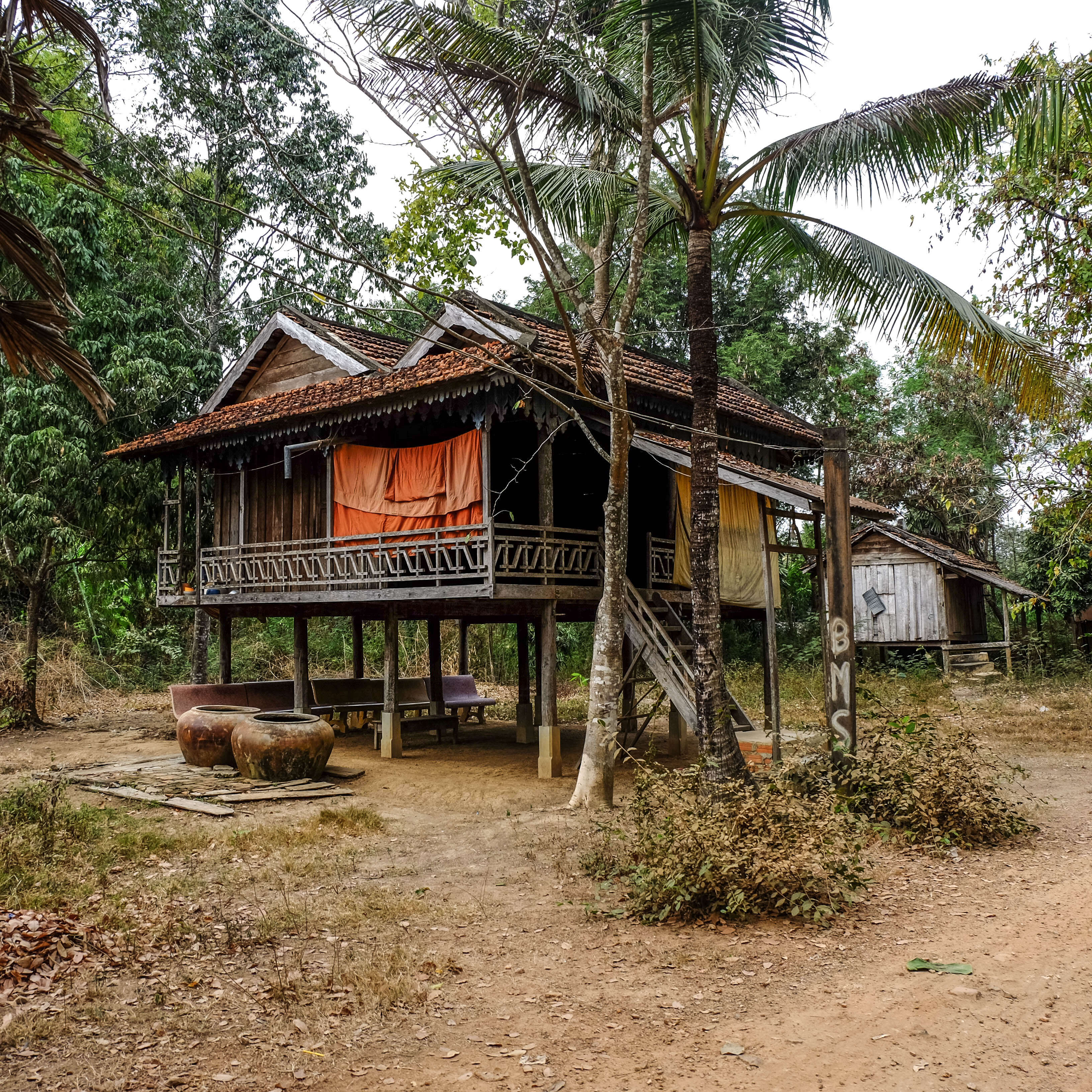
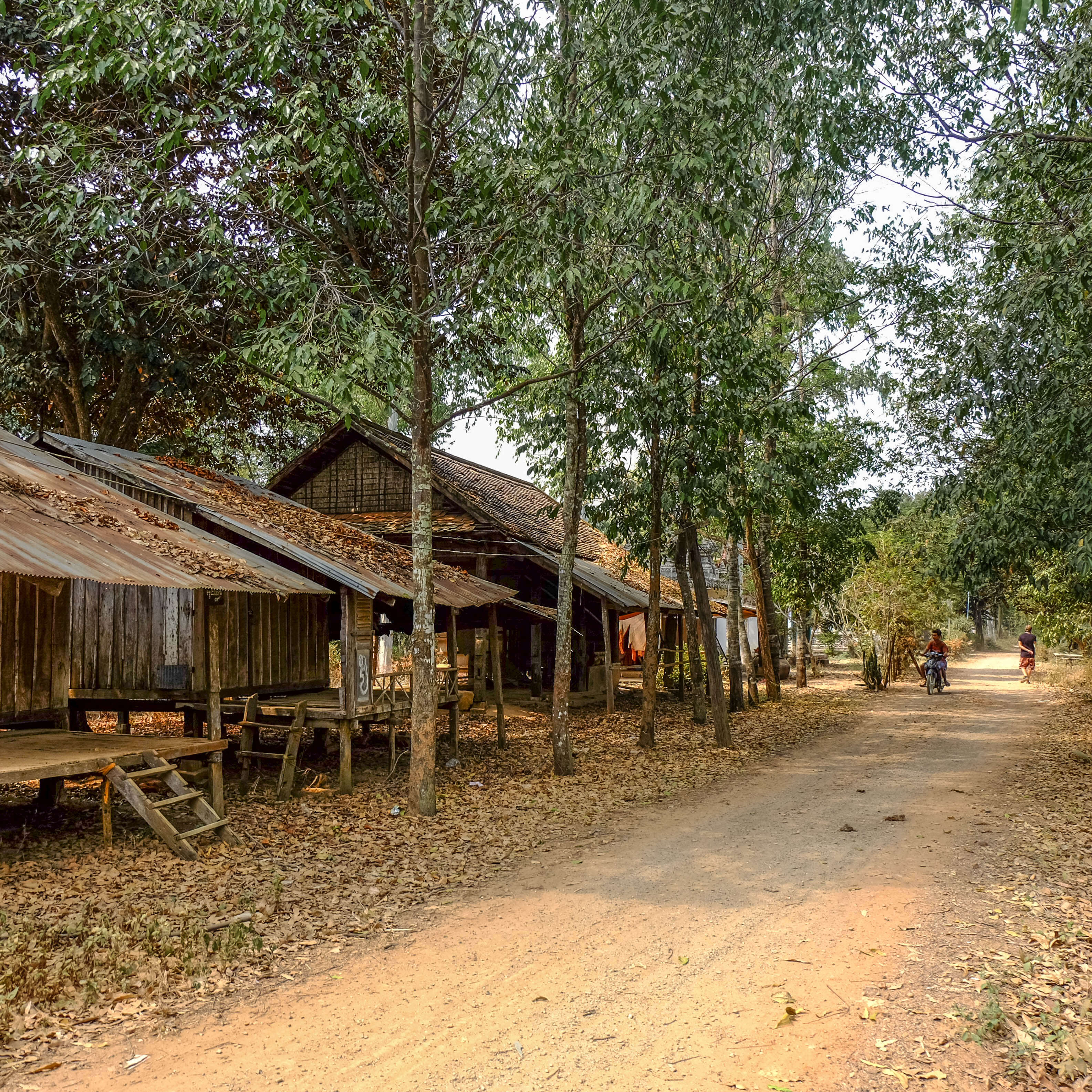
Battambang boasts numerous religious buildings scattered throughout the city and its outskirts.
Beautiful are the modern temples, which can be visited freely, where it is possible to admire the traditional Khmer Architecture at its best.

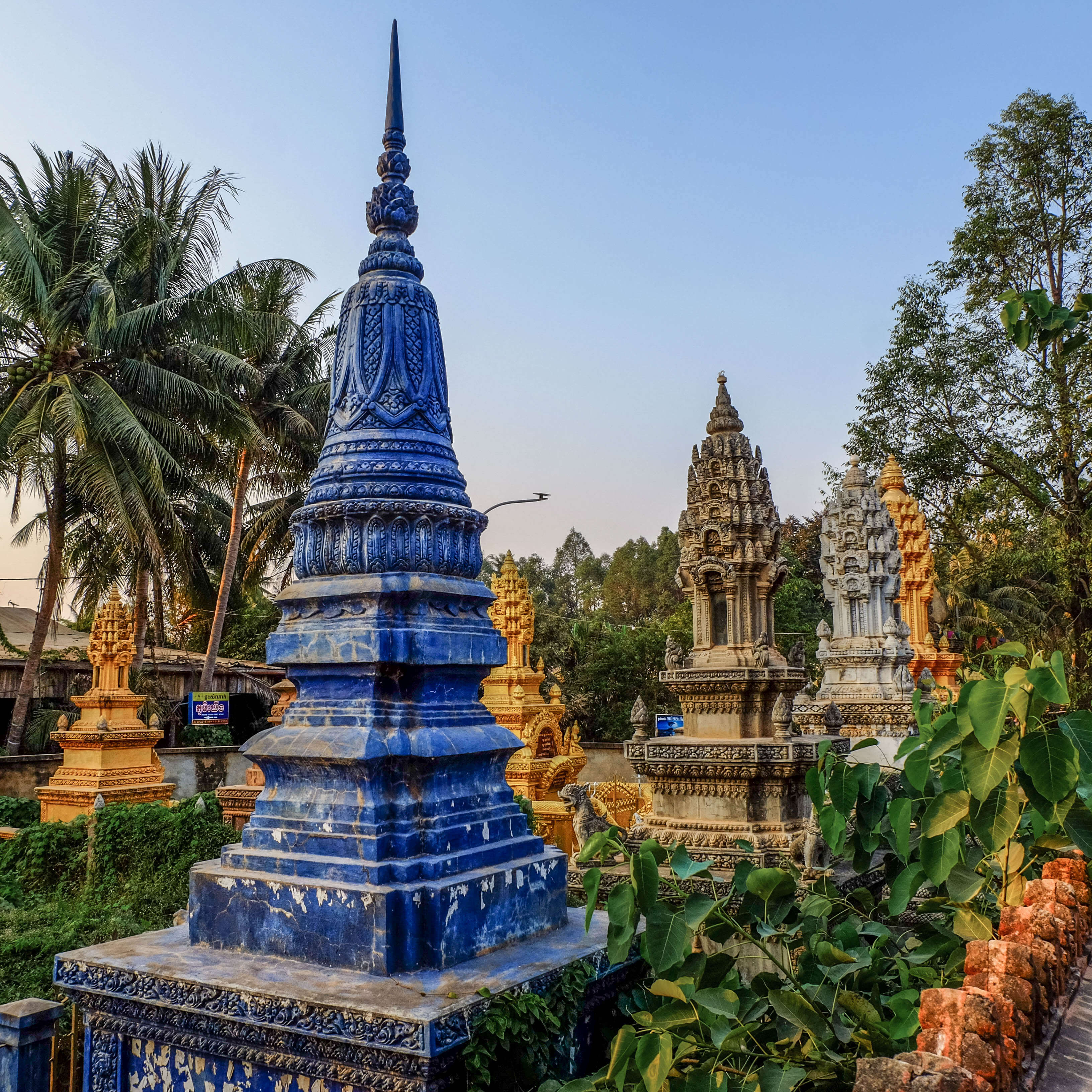

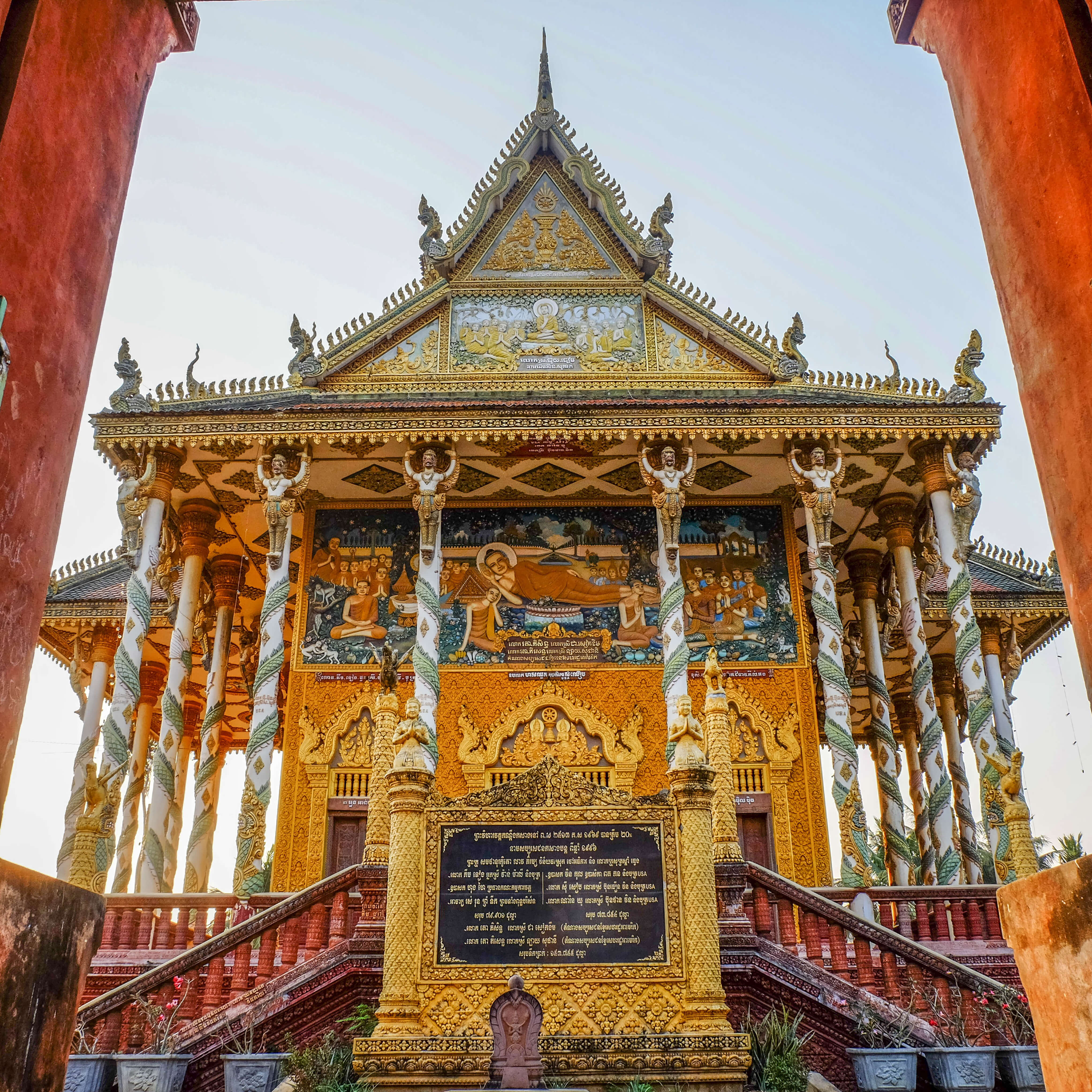
The countryside around Battambang also has some interesting ancient religious sites, many of which belong to the Angkor era. These sites can easily be visited in a day by renting a scooter or tuktuk.
Some temples are very reminiscent of those of Angkor Wat, however they are not in the same excellent condition.
Among these, the sites of greatest historical, architectural and cultural interest are:
WAT EK PHNOM
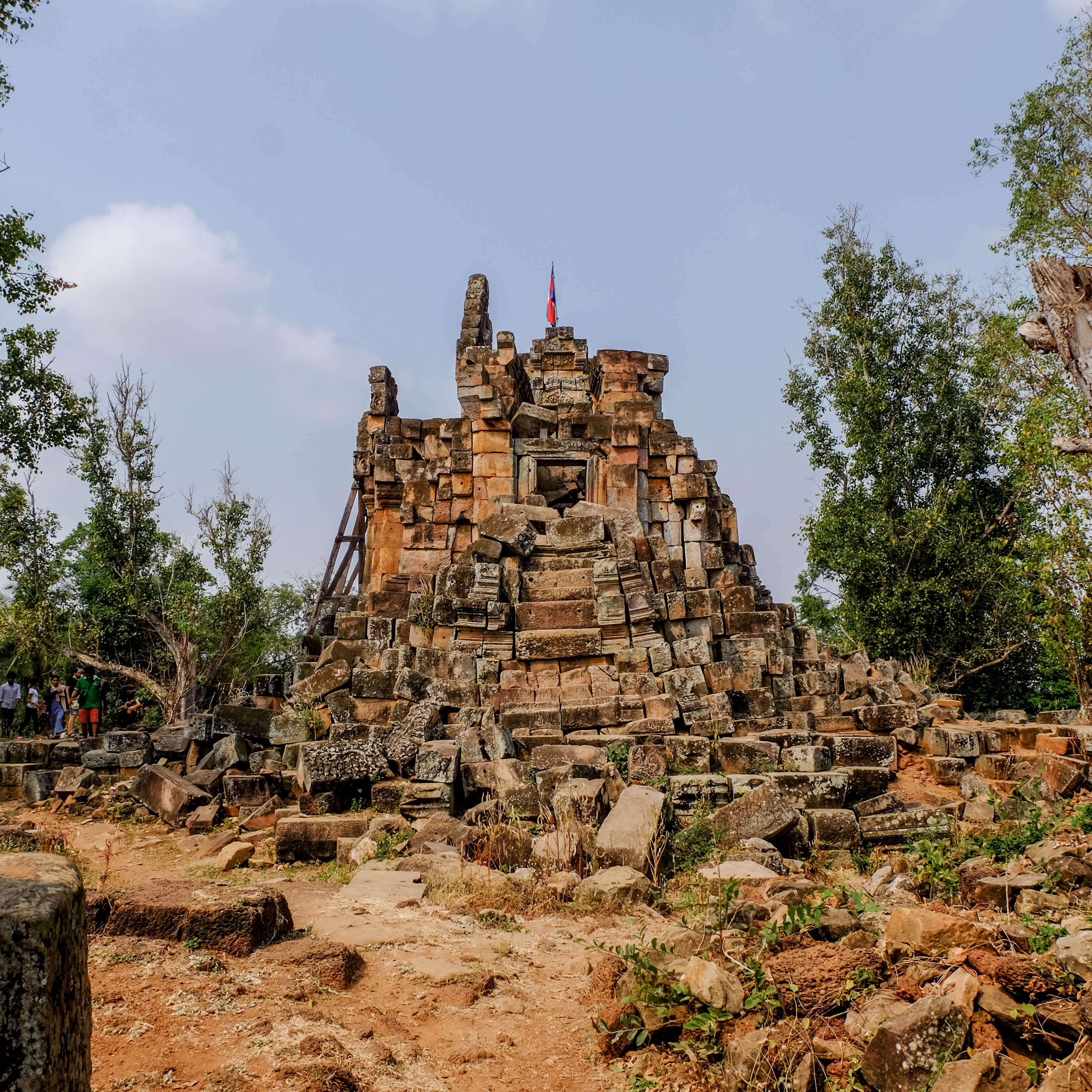
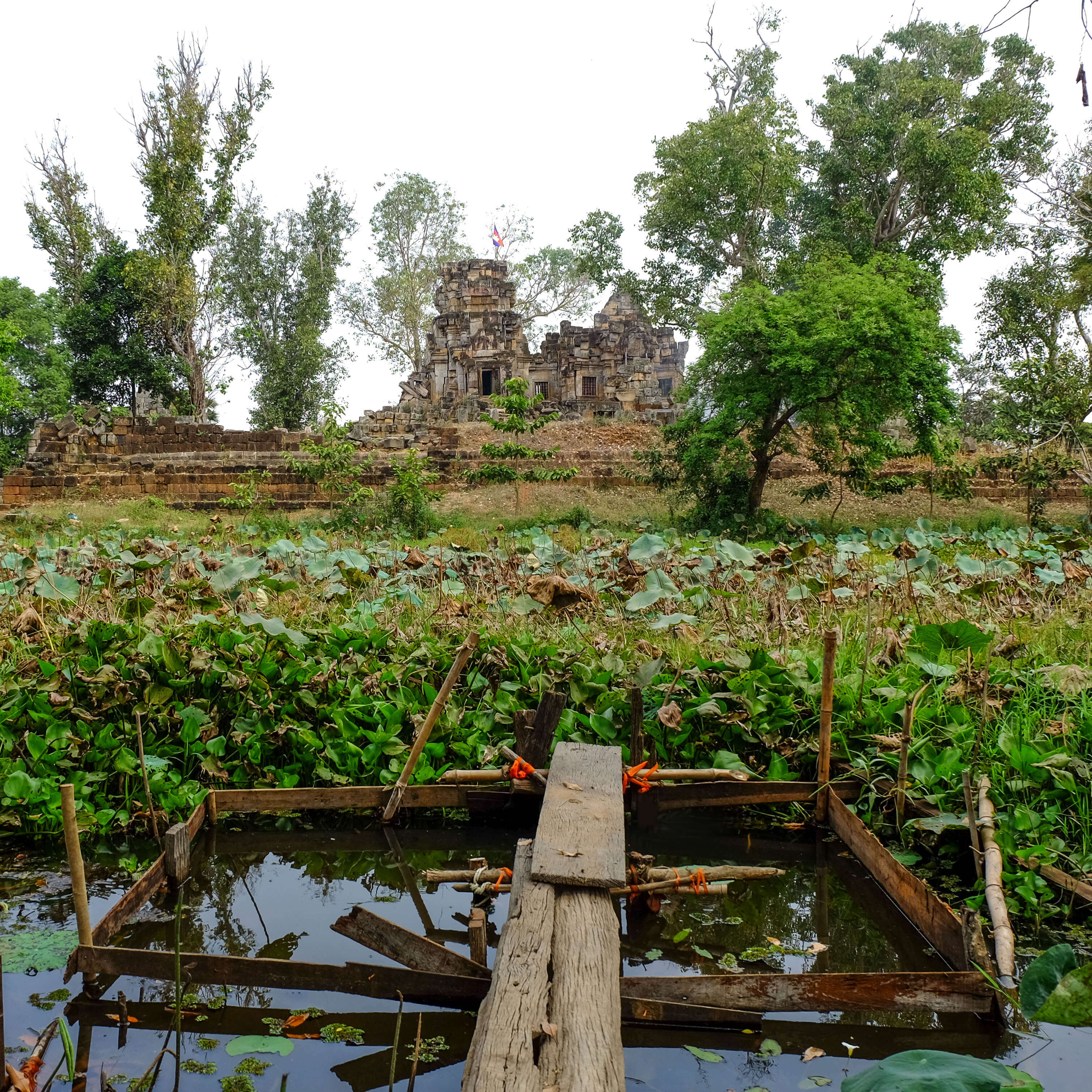
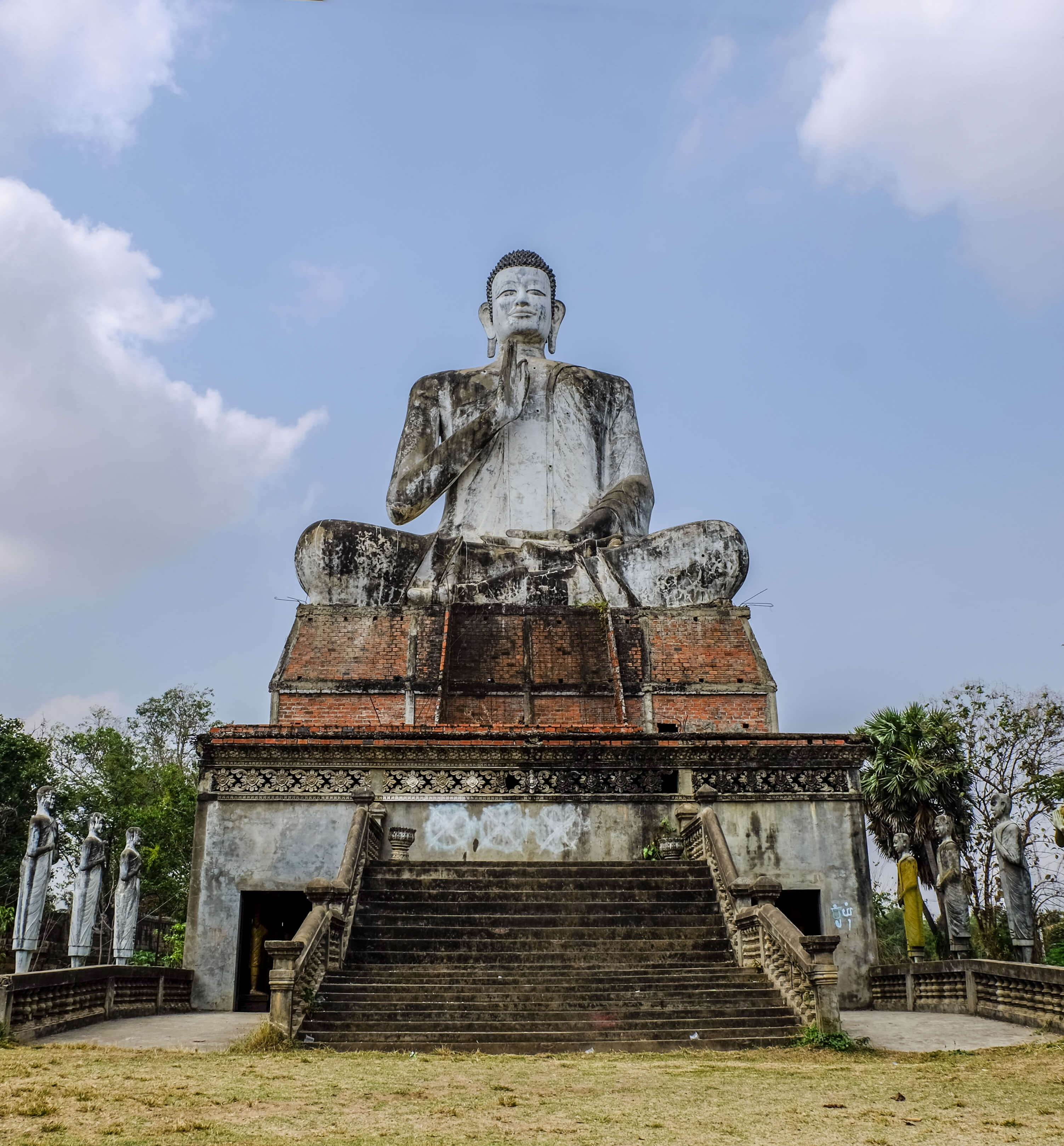
At the right and left sides, a giant Buddha statue and a new Temple have been built, next to a lotus pond surrounded by monk dwellings.
We were not particularly impressed by this site, but we were still glad to have experienced one of the most important historic sites of Battambang.
PHNOM BANAN TEMPLE
The Temple of Phnom Banan is the best preserved Angkorian Temple of Battambang, dating back to the 11th century. Built on the top of a hill around 20 km south from the city center, visitors need to climb over 350 steps to reach the temple on the summit, where it is possible to enjoy a nice view of the surrounding countryside.
The site is stunning and the surrounding landscape is beautiful, and if you are in Battambang, this location deserves a visit. It has to be said though, that after a few days spent in Angkor Wat archeological park, any other temple just can’t bear comparison.
What we enjoyed most was actually the scooter ride on the way to the temple. The road weaves between several local villages where it is possible to enjoy the local life and admire some beautiful Khmer countryside timber houses.
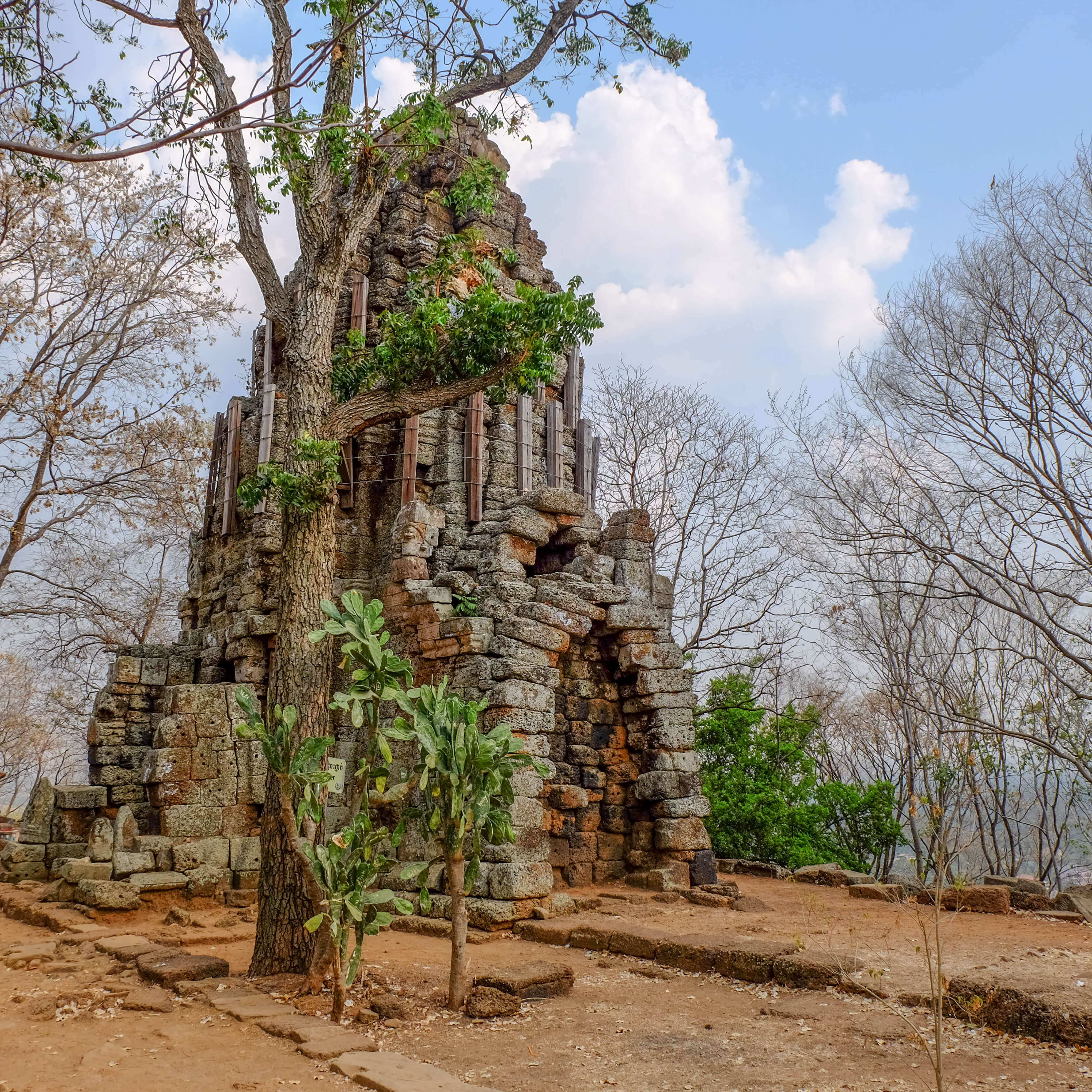
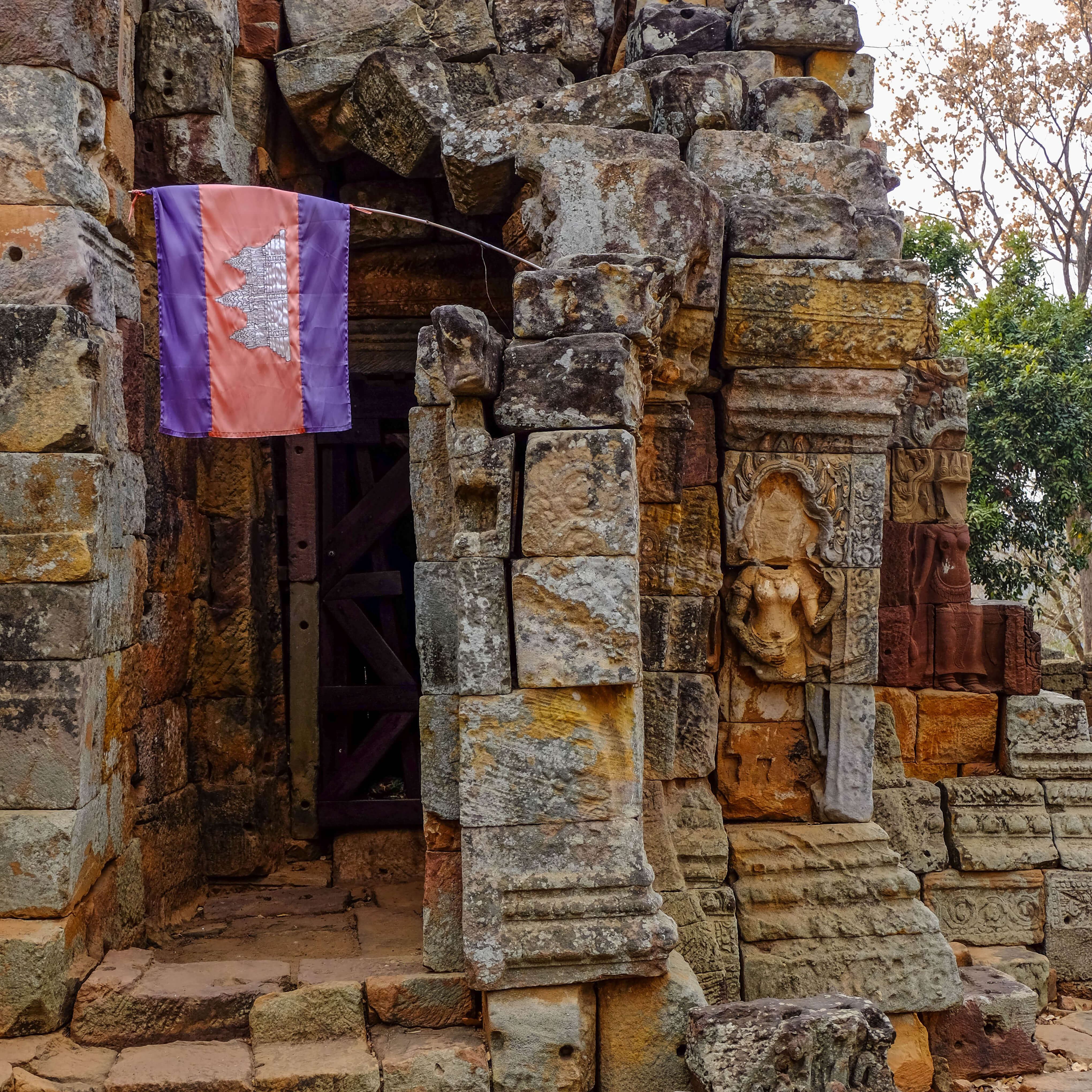
We visited Phnom Banan Temple combined with Phnom Sampov and the Bat Cave in one afternoon. These two places are not very far apart, and visiting them together can be an efficient thing to do.
We left Battambang around 13.30, and the way to the temple took around 50 minutes (stopping here and there to snap some pictures). The site is not very big and the whole visit took us around 1 hour.
After Phnom Banan we headed to Phnom Sampov in time to visit the site and be ready at sunset to witness the incredible natural show of the Bat Cave.
BASET TEMPLE
The Baset Temple was originally built in the 11th century during the reign of King Suryavarman I. The Temple was brutally damaged, especially in recent history by the Khmer Rouge, so that what remains today, is sadly just some of the gate frames and piles of sandstone blocks.
The temple is located around 15km north-east from Battambang city center and popular with the locals for the big lotus pond that lies adjacent.
We didn’t manage to visit Baset Temple in person.
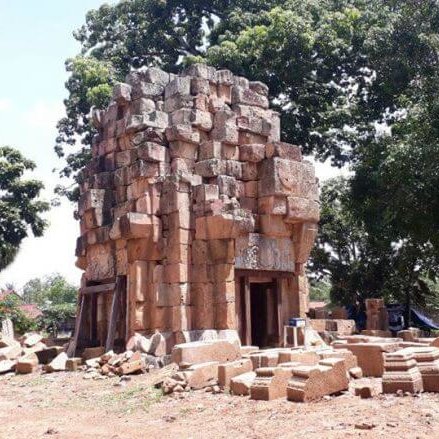
PHNOM SAMPOV HILL AND THE BAT CAVE
Located around 11km south of Battambang, the Phnom Sampov hill is one of the most popular places in the province, hosting several natural and cultural sites steeped in Cambodian history and legends on its summit.
The mountain is in fact perforated inside with many caves, some of which are infamous as locations for mass executions during the Khmer Rouge regime; while at its summit there are temples, shrines and panoramic viewpoints, where it is possible to admire a beautiful view of the surrounding flat countryside.
The Hill is 250 m high, and it’s simple to climb up just following the concrete road. It is also possible to ride a scooter uphill, but the slope seems to be too steep for tuktuks.
The main places to visit at the Phnom Sampov Hills are: The Killing Caves, The Sampov Temple and the Bat Cave.
The killing caves of Phnom Sampeau are an awful landmark of recent Cambodian history, being a place of execution during the Khmer Rouge regime and ensuing genocide.
Is it possible to visit the Killing Caves by climbing on the top of the mountain. At the entrance, a lying golden buddha statue and remains of skeletons and skulls greet the visitors.


There is no entrance ticket, but donation is expected by the several monks, locals, and kids that you will find along the path to the cave.
Next to the Killing cave entrance there is also a viewpoint, where it is possible to take a breathtaking glimpse on the surrounding countryside.
I actually found the contrast between the beautiful panorama and the horrible thought of the thousands of murders that were carried out here in this same place very disquieting.

Taking the other path on the top of the hill, it is possible to reach the Sampov Temple, where a nice complex of Buddhist shrines, golden stupas, pagodas, and panoramic viewpoints stand on the cliff ridge, immersed in lush vegetation and populated by friendly monkeys.
The late afternoon is an especially good time to visit the temple, whose buildings shine in the soft and colorful light of the setting sun.
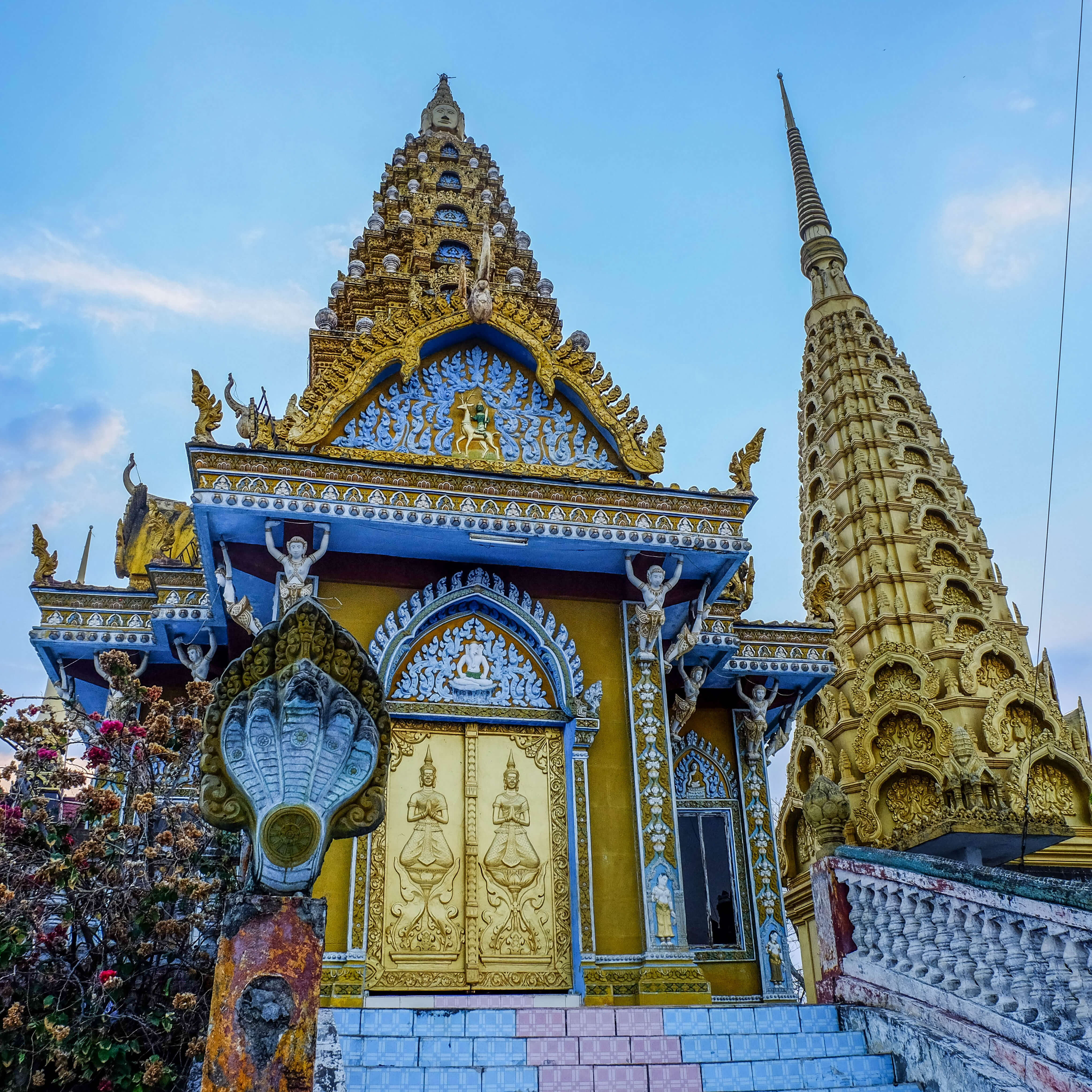
This is indeed the right moment to visit the hill and temple because it allows visitors to climb down right on time to watch one of the most epic natural attractions that Battambang has to offer: the Bat Cave.
Everyday at sunset (around 17.30), thousands of bats fly out the cave in and endless stream that last for more than 1h. It is really a unique spectacle, totally worth the visit when in town.
Plus, at the bottom of the cave there are a few restaurants where you can enjoy the festivities comfortably sitting on a table having a snack.

WHAT ELSE IN BATTAMBANG?
THE BAMBOO TRAIN
One of the most popular destinations for tourists is the Battambang Bamboo train (also called ‘Norry’ in Khmer), so we decided to check it out, and it proved to be good fun.
Originally, this simple rail system made by one single rail for both ways with extremely rudimentary carts, was used to carry goods along the northern part of the Country, especially around Battambang and Poipet.
The carriage is made of bamboo sticks, forming a square platform anchored to a steel frame, attached to bogies and powered by en engine, which can reach speeds of over 40 km/h.
The whole system is ramshackle and not very safe (ok, not safe at all), even if in recent times it has developed breaking system for the carriages.
What makes it especially interesting is the fact that once two carriages come across one another going in opposite directions, one of the two need to be dismantled and removed to allow the other to pass.


The Bamboo train that we can enjoy now at the outskirt of Battambang is a kind of reconstruction made especially for visitors to enjoy and have a glimpse of this dated way of transportation that is still used effectively in some remote place in Cambodia.
The Battambang bamboo train is accessible at 2 different points, one located 4km south-east from the city center and reachable with a 15 minute ride; and one in the far south, very close to the entrance of the Wat Banon Temple (called on google maps ‘Banon Bamboo Train’)
The ride is kind of short (less than 1h total round way) and kind of pricy (5$ per person), and at the end of the rail you will be spending 15 minutes between a bunch of little souvenir stands with very persistent vendors.
It is definitely a touristy thing to do, but we found it kind of fun and had a good bit of laughs!
Battambang can be reached by bus, car, or by boat through the Tonle Sap Lake.
The Battambang airport is currently closed and there is no railway running through the city.
By bus / minivan
During our journey, we reached the city by bus from Siem Reap. The journey of about 180km took about 4h. The two cities, although relatively close, are not connected by a direct road; the bus proceeds first in a north-westerly direction as far as the town of Sisophom, and then returns to the south-east towards Battambang.
Also, at the time of our visit, the road was a very bad condition, not always paved and riddled with potholes or work in progress.
We bought one-way tickets at one of the many tourist agencies on the main street of Siem Reap, and the return ticket via our hotel.
Although there are several agencies that cover this route, we have noticed that they all offer more or less the same departure and return times.
It is possible to consult the companies and timetables through this site.
By car
The option of renting a taxi is much more expensive, but much faster than a bus.
The journey between Battambang and Siem Reap should cost around $40/50 and take a couple of hours.
By boat
The option of reaching Battambang by traversing the waters of the Tonle Sap Lake can be a pleasant idea during the wet season when the waters are abundant and the boats, especially the big ones, are not at risk of getting stuck on the shallow shores of the lake. The journey, which lasts around 8 hours, allows you to pass through numerous floating villages and admire life in the waters of Tonle Sap Lake.
During the dry season, this option is to be avoided. The possibility, in fact, that the boat remains stuck on the bottom of the lake or its tributaries is real, turning the trip into a real nightmare odyssey (according to many reviews found on the internet). Despite the difficulty of navigating the lake in the dry months, some companies continue to sell tickets.
Being in the middle of the dry season, we did not consider this option during our visit.
During our stay, we stayed at the Blue Diamond Hostel, which we highly recommend for an unbeatable value for money.
Through the front desk, we were able to rent a scooter and book the return bus tickets.
The hotel has a great bar and a cheap and delicious restaurant, but above all the swimming pool, proved to be essential for recovering from the stifling heat.
If we enjoyed Battambang, it is also thanks to the stay in this excellent hostel.
(you can book this hostel on booking.com and get a 15€ discount through this referral link)


We enjoyed our time in Battambang and we were happy to have included it on our itinerary. After the first intense week spent exploring Phnom Penh and Siem Reap, we needed something less tight and more relaxing.
We had to admit that after visiting Angokor Wat, it is difficult to be impressed in the same way, and perhaps it is probably one of the reasons why Battambang enjoys so little tourism compared to other destinations in Cambodia.
Battambang is nice, quiet, and has the charm of a lively and authentic city, far from mass tourism. However, it must be said that it does not offer historical or naturalistic sites comparable to the most famous destinations, so the secret to appreciate it, is to enjoy it for what it is without making comparisons.
The two days spent in the city were absolutely enough to see all the sites of interest aboard our scooter, and relax with a cocktail and a dip in the pool, and we couldn’t ask for more. The choice of the hotel in particular made the difference for us.
If your trip to Cambodia is tight, we believe that Battambang is not at the top of the must see list. If on the other hand, you have more time available, then this quiet town deserves a couple days of exploration, to get in touch with one of the less beaten and more authentic Cambodian realities.

IF YOU FOUND THIS POST INTERESTING AND INSPIRING, HELP ME TO SHARE IT WITH OTHER TRAVELERS!
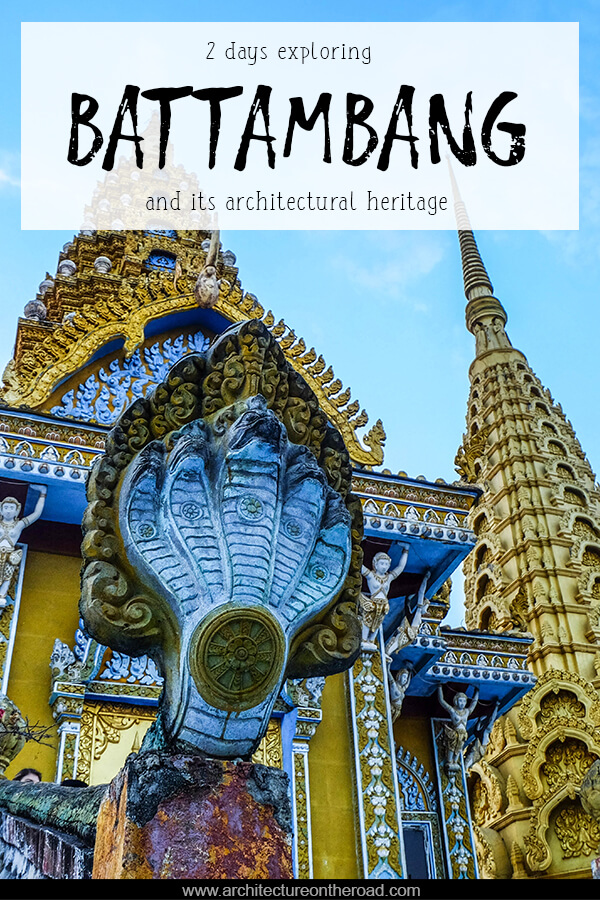
More from Cambodia
stay tuned !
search for a destination
latest travel itineraries
latest Cambodia articles
Text and pictures by
Architecture on the Road ©
Architecture on the Road
All rights reserved
All photographs on this site were taken and are owned by me (unless credited otherwise).
If you would like to use some of these photos for editorial or commercial purposes, many of these are available on Shutterstock (click the link below). Otherwise, please contact me on Instagram, Facebook, or by email.
Do not use my pictures without my written consent. Thank you!

